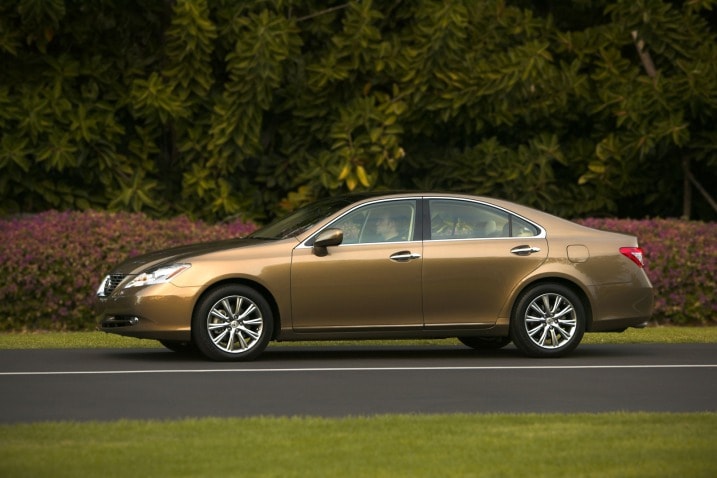Mileage Limits
What's the next catch? Well, how about the allotted mileage? This lease includes 10,000 miles per year, or a total of 30,000 miles. That sounds like a lot, right? Well, it really isn't. Even people who work from home can have little trouble putting 10,000 miles (or more) per year on their cars. It's doubtful that most people can deal with that kind of mileage limitation. If we changed the lease to include 12K miles a year, the payment rises to $482 a month, or $10 a month more.
But even this higher mileage limit is hard to stay within. The fact is that most people tend to drive at least 15,000 miles per year. When you are leasing, you want to be sure you don't go over your allowed miles, as it can be costly. Most car leases typically charge 15-30 cents per mile over your contract miles (BMW charges 20 cents). The additional 5,000 miles per year, or a total of 15,000 miles over the course of our 36-month lease, could cost an additional $3,000 when we turn the car in. Adjusting the lease contract to include the more realistic 15,000 miles per year would increase the payment to $502 per month, or $103 a month more than the 10,000-mile-per-year lease.
Sales Tax
There is still a third bump in the road...the sales tax. The government wants its piece of the action, too, and this is where the small print comes into play. The small print states that the down payment excludes sales tax (along with registration and title fees). How much can that possibly be? It depends on where you live. Some states, like Texas, charge sales tax on the entire selling price of the vehicle (the capitalized cost, in leasespeak). Most states, however, only charge sales tax on the monthly payment. Let's take an average sales tax rate of 6 percent. If the sales tax were charged on the entire selling price of the vehicle, you would have to come up with an additional $2,187. If the sales tax were charged only on the monthly payment, the additional monthly amount would be $30. This brings our monthly payment up to $532, or $133 per month more than the advertised payment.
Negotiating the Cap Cost
Here is a catch that actually works in the buyer's favor. Most advertised leases are based on a selling price that is higher than what one could reasonably expect to pay. In this case, the lease is based upon paying $36,455 for the car. However, the invoice price is $35,220, meaning you might be able to negotiate an even lower price on the car. Every $100 you negotiate off the price of the car saves you about $4 per month, in the case of this lease. The message here is that you should never let the manufacturer determine the price of its car for you. Chances are they don't have your best interest at heart.
Reduced Residual Values
2008 saw a rapid rise in oil prices, along with the expected increase in gas prices. An extended period of $4/gallon gas caused a seismic shift in the public's buying habits. Fuel-efficiency became a priority and the popularity of trucks and SUVs fell at a precipitous rate. The result was a drastic decline in the resale value of these once-ubiquitous vehicles. As a result, they are now worth much less when the lease is up, forcing manufacturers (including BMW and Honda) to lose millions of dollars.
This has forced some manufacturers to curtail their leasing programs (like General Motors) and has forced others completely out of the leasing business (like Chrysler). It is also causing most manufacturers to adjust their residual values downward in an effort to hedge against continued falling values. This in turn forces lease prices upward. A few years ago, you could get a 325i, similarly equipped to our 328i example, for $100/month less and for only 24 months (longer leases generally help to reduce the monthly payment). This trend is likely to continue into the future. This means that you can expect your next car lease to cost more. If you are coming off an existing lease, you can expect a bit of sticker shock if you shop for a new lease.
Summary
So, our $399-per-month BMW is, in reality, $532 per month. Is this an amazing deal? Well, that is for you to decide, but let's also put this into context. If you had purchased this same car and financed over five years at an available 0.9 percent interest, you would have to put down more than $5,000 (plus sales tax) to get the same $532-per-month payment. Putting no money down would net you a monthly payment of nearly $620 for 60 months (plus sales tax). Of course you would then own the car, but it is still interesting to compare the payments nonetheless.
What is the lesson here? It is essential to read the small print and make sure that the terms that are being advertised will fit into your lifestyle and budget. BMW is not unique in the way it advertises its leases. Most luxury brands will advertise leases with only 10,000 miles per year, and almost no manufacturer advertises a lease with less than a $1,000 down payment.
For further leasing advice, including how to calculate a car lease and how to pick the right term, read "10 Steps to Leasing a New Car."


